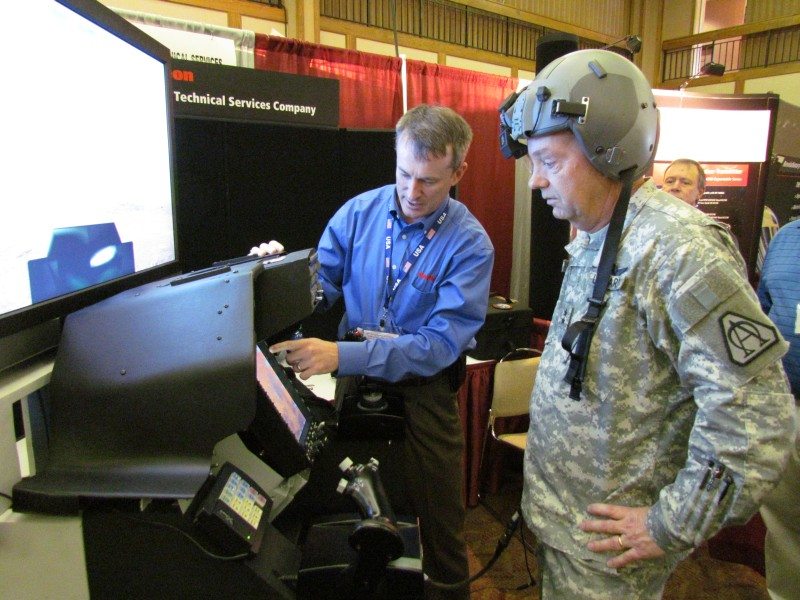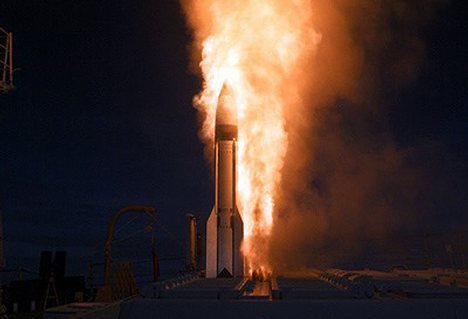While most of the focus in today’s Army is on the war fighter and how best to support current military operations in Iraq and Afghanistan, a leader in military aviation is calling for some of that focus to shift to the equipment needs of the future.
In the Army’s aviation arena, that future focus should aim on a new rotary wing platform, said Maj. Gen. Anthony Crutchfield, Army Aviation branch chief and commander of the Aviation Center of Excellence at Fort Rucker, Ala.
Speaking at the Army Aviation Association of America’s 37th annual Joseph P. Cribbins Aviation Product Support Symposium at the Von Braun Center on Thursday, Crutchfield said the symposium’s theme – “Army Aviation: The New Challenge” – emphasizes the need for planning for future systems that will continue to grow the Army’s aviation mission.
“We’ll not begin the next fight the way we end this one,” Crutchfield said, referring to Operation Iraqi Freedom and Operation Enduring Freedom. “The aviators of today were trained by Vietnam veterans, but this war is not Vietnam. We have to prepare for a 21st century fight. Our greatest challenge lies beyond the horizon, beyond Iraq and Afghanistan.”
The future security environment will be built on Army needs and capability assessments, he said, but, to get to that, Army aviation leaders must “go to a 20-foot hover and start looking past Iraq and Afghanistan.”
Crutchfield centered many of his comments on comparing two aviation systems – the highly successful “Huey” helicopter and the failed attempts to build the Comanche helicopter.
Huey (UH-1) helicopters have been in the Army’s aviation arsenal since Vietnam. The Huey took four years to go from requirement to first flight, and eight years from requirement to full production.
More than 7,000 Hueys flew in Vietnam and 16,000 were built, providing a proven helicopter system that has been used worldwide. Just two weeks ago, the Yakima Training Center in Washington state retired their Huey as the unit’s Medevac helicopter.
“That’s one of the last Army units to have UH-1s. That’s 51 years of service,” Crutchfield said. “It lasted 51 years for us.”
In contrast, it took eight years of new aviation system development just to come up with the name “Comanche.” It took 22 years to build two Comanches, now museum pieces. The program was canceled, with much of its resources being rerouted to modify the Army’s proven aviation systems.
“I don’t think we can continue that way. The Huey wasn’t perfect, but we’ve modernized it along the way,” Crutchfield said. “I don’t want to offend anyone with the Comanche and UH-1 analogy. I just want to drive home the point that we can’t expect to get it all right, but we also can’t afford to get it all wrong.”
With the Huey, the Army determined the requirement, developed a solution, procured and fielded a quality airframe, and adapted that airframe through modernization. With the Comanche, the Army and its industry partners kept searching for the perfect platform and never got it within its grasp, he said.
Today’s challenge is that the Army must find replacements for an aviation fleet that does not have an infinite lifespan, even with modernization taken into account. Crutchfield said the Apache and Black Hawk lifespans end in 2040, the Chinook’s lifespan ends in 2035 and the Kiowa’s lifespan ends in 2025.
“We’ve got to set an aim point for a future level and then we need to develop a new airframe by 2025,” he said. “We’re not going to field the perfect solution, the holy grail. If we try for the holy grail, then we will cancel the next thing and we won’t be flying anything.”
The role of the next airframe – lift, attack or utility – has not yet been determined. But, Crutchfield said the Army and industry partners must look out beyond current needs and determine requirements based on “our best assessment of the future.”
That “best assessment” means synchronizing needs across the aviation enterprise and the war fighting functions to include movement and maneuver, fire systems, intelligence, sustainment, command and control, and protection. It also means realizing that changes in science and technology, Army doctrines and tactics, force structure and the enemy will have to be considered.
Other factors to consider is that aviation systems must be able to operate in a collaborative environment of networks and a mix of ground and air capabilities; that funding will be limited; that new airframes must perform, be available, increase in range, speed, payload, survivability and reliability, and reduce in logistical footprint; and that aviators can’t expect to always operate from fixed bases.
The Army’s new airframe can be available by the 2030 timeframe if the aim point is kept stationary and if the Army is willing to accept “good enough” based on assessments and analysis, Crutchfield said.
“This is revolutionary, not evolutionary,” the major general said. “I feel passionately about this because the men and women who trained me handed off to me a mantle. I feel like they have entrusted in me something that is very valuable. I do not want to let you down, our Soldiers down, our Army down or our nation down.
“I feel, finally, in my heart, that if we can set an aim point, stick to it, develop a product and make trade offs based on what’s good enough, then we will have a new airframe.”











